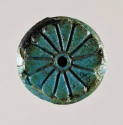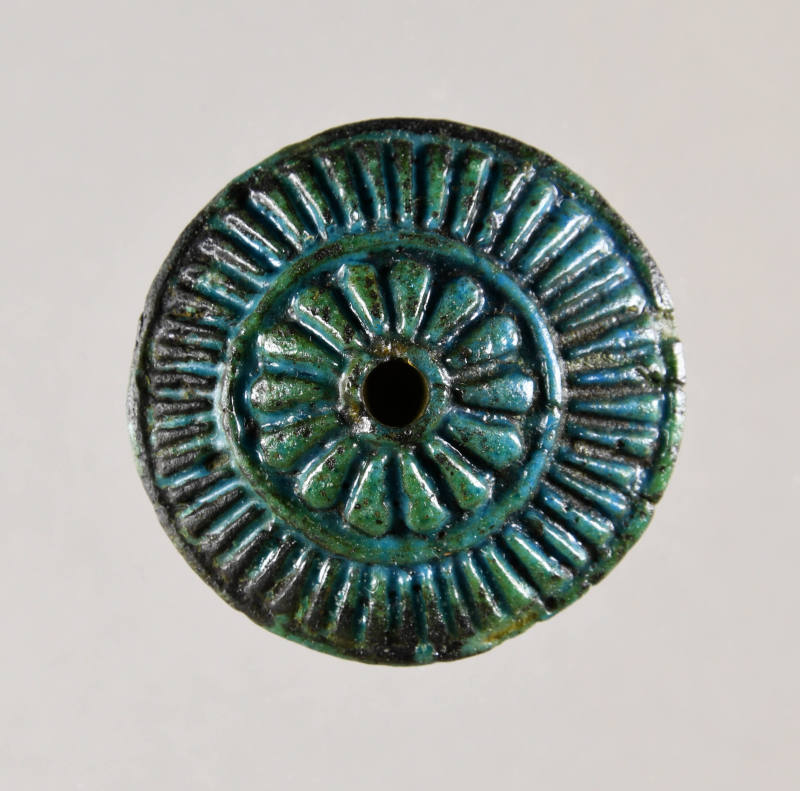ClassificationsAncient Egyptian Art
Ear Plug
AAT Object Form/Functionear ornaments
Possible OriginThebes, Egypt, Africa
CultureEgyptian
PeriodNew Kingdom, Dynasty 18
Date1539-1292 BCE
MediumFaience
Credit LineGift of the Georges Ricard Foundation
Dimensions1 9/16 x 1 9/16 x 11/16 in., 26 g (4 x 4 x 1.8 cm, 15/16 oz.)
Object number2018.010.908
Label TextJewelry in ancient Egypt was worn for adornment and had amuletic and protective properties. The ancient Egyptian word for “necklace” is shashayt, derived from the root sha, meaning “to determine, impose fate.”Necklaces made of blue and green faience beads imitated the semiprecious stones lapis lazuli and turquoise. These stones carried symbolic properties. Green and turquoise symbolized new life and resurrection. Lapis lazuli related to the night sky and the primordial waters. Carnelian-red evoked blood and the heat of the sun. Sometimes faience beads were interspersed with amulets of protective deities. The mass production of glass beads began in the New Kingdom and reappeared in the Ptolemaic and Roman periods.
Women in the New Kingdom wore earplug earrings decorated with rosettes. The front has a central rosette within a circle and radiating raised lines decorating the outer ring. The backside has a design of a thirteen-petal rosette. A grooved edge between the front and the back anchored the plug into the earlobe piercing.
Exhibition HistoryLife and the Afterlife: Ancient Egyptian Art from the Senusret Collection, Michael C. Carlos Museum, February 4 - August 6, 2023
Published ReferencesMelinda K. Hartwig, ed. Life and the Afterlife: Ancient Egyptian Art from the Senusret Collection (Atlanta: Michael C. Carlos Museum, 2023), catalogue entry 6.
ProvenanceEx coll. Georges Ricard Foundation, Santa Barbara, California.
Status
Not on viewCollections
- Ancient Egyptian, Nubian, and Near Eastern Art
1980-1760 BCE
1076-332 BCE
722-332 BCE
305-30 BCE
1279-1213 BCE
1980-1760 BCE
722-332 BCE
late 19th-early 20th Century
3rd Century CE
722-332 BCE
722-332 BCE




















